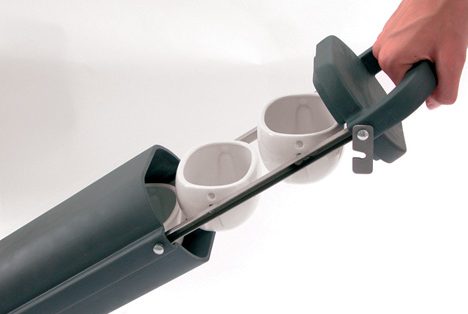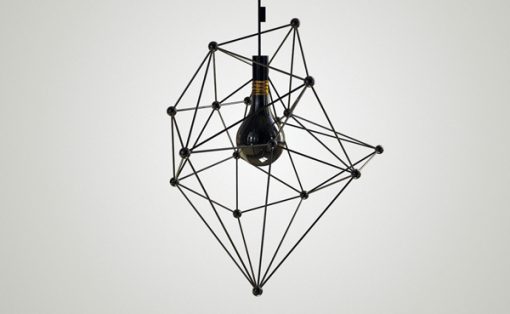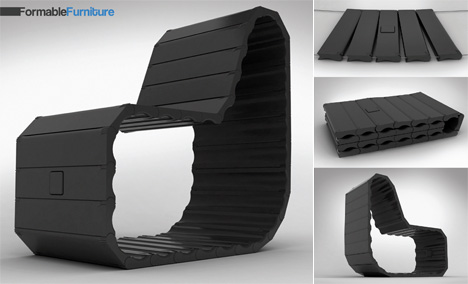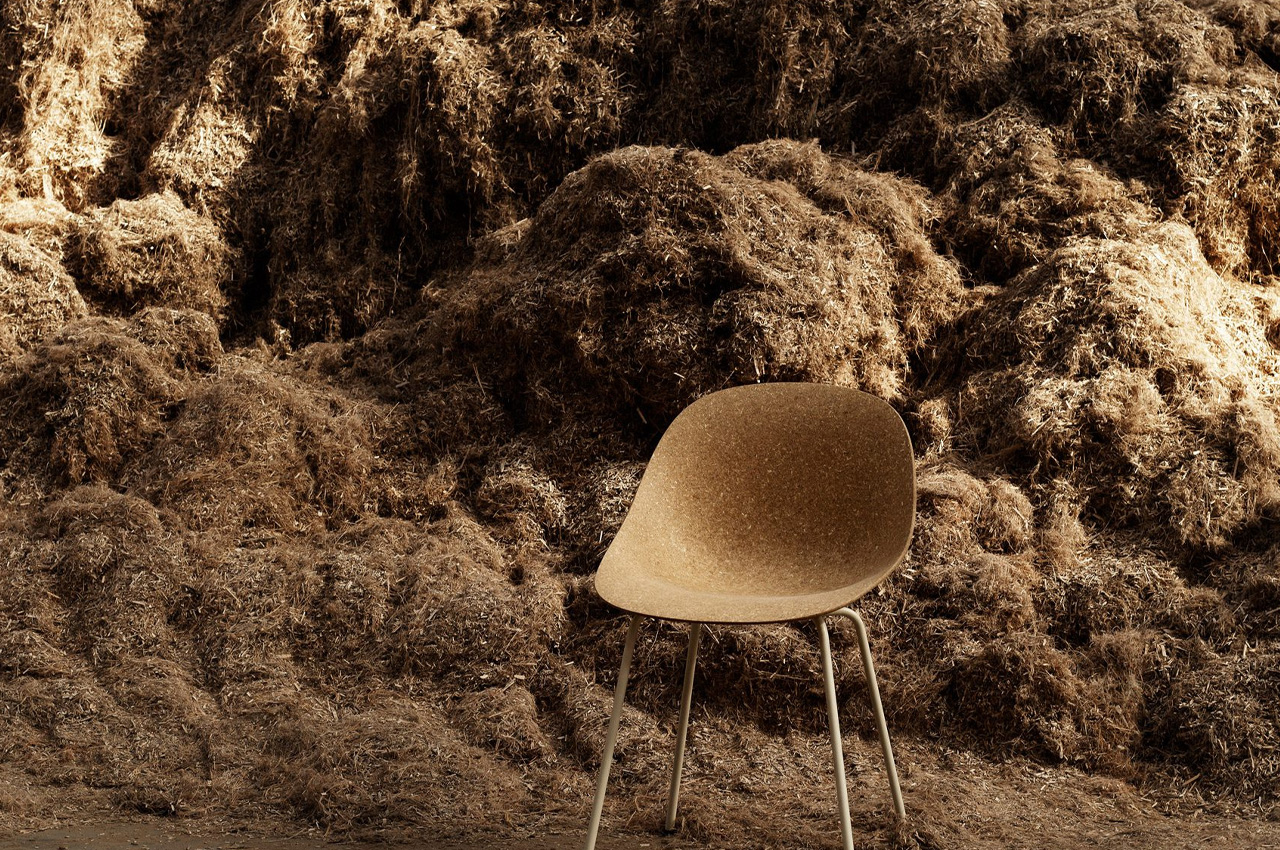
A chair is probably one of the most important pieces of furniture in our home. We spend the majority of our day sitting on chairs, whether we’re working in our home office, enjoying a meal, or simply sitting and reading a book for leisure! Hence, a chair needs to not only be comfortable but ergonomic and aesthetic as well. And, a unique and innovative chair design that is made using super interesting materials is the Mat Chair by Normann Copenhagen.
Designer: Normann Copenhagen

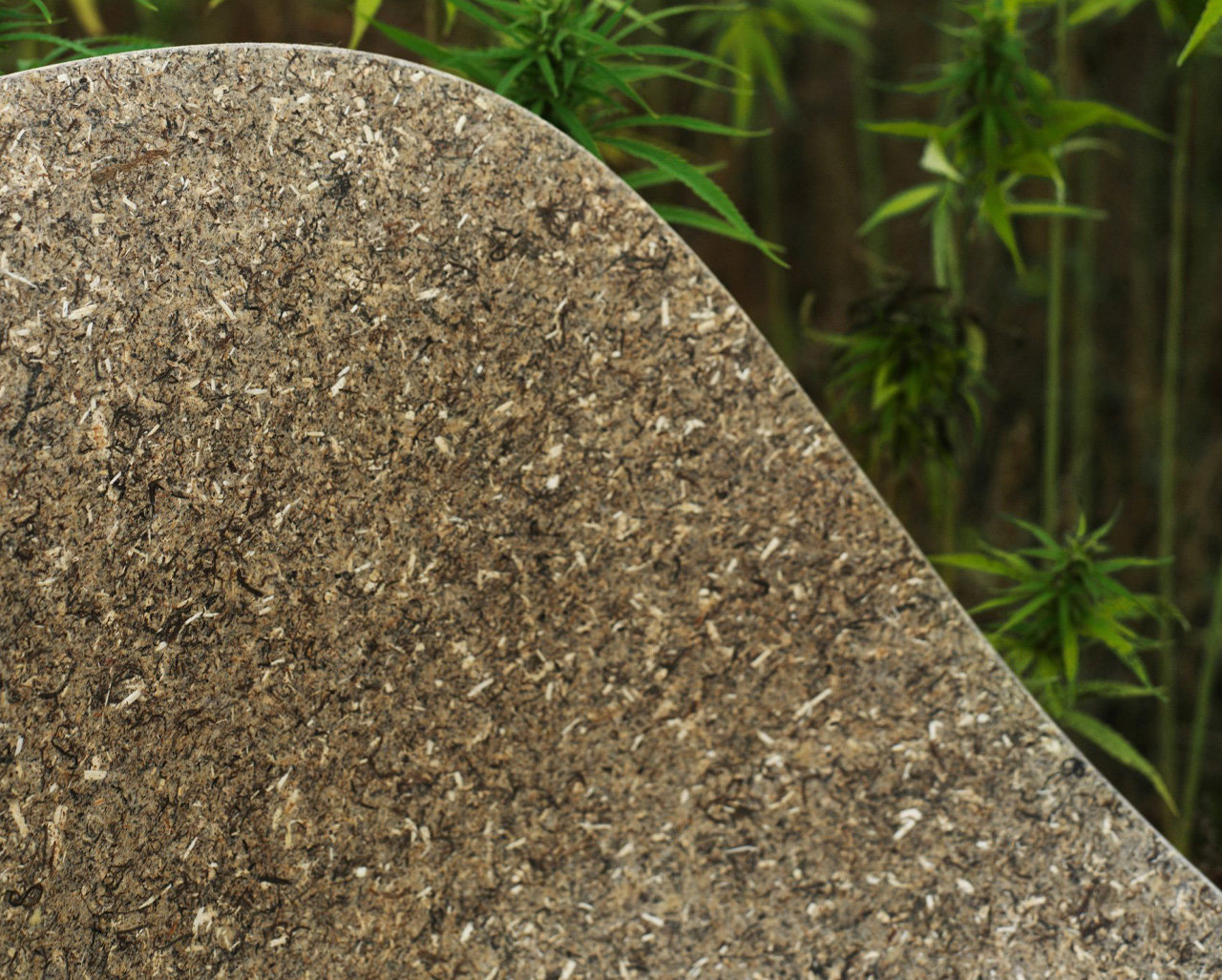
Designers Foersom & Hiort-Lorenzen teamed up with furniture brand Norman Copenhagen to create a collection of plant-based chairs, which were unveiled at Stockholm Design Week. The Mat furniture collection includes two unique chairs – one made from hemp, a type of cannabis plant, and one made from a combination of hemp and eelgrass – a marine plant much like seaweed. These intriguing biomaterials were used to replace injection-molded plastic, creating a shell chair supported by powder-coated steel legs.
In around 2008 Foersom & Hiort-Lorenzen started to experiment and trial with the use of hemp. “Now, some 20 years later, the hemp material we have developed in collaboration with Normann Copenhagen is more responsible, a lot sturdier, and with a higher aesthetic appeal than any of the previous prototypes,” Hiort-Lorenzen said. “It’s a one-of-its-kind product.”


The chairs were created in collaboration with hemp specialists from the Danish Technological Institute. The shells are created from hemp stems instead of leaves, and the stems are sourced from farms that usually treat them as a waste product. The hemp fibers are combined with dried eelgrass to build the eelgrass chair. The milled hemp and eelgrass fibers are transformed into a sheet material and then shaped using a specially developed compression machine. The fibers are mixed with a “bico binder” to make the chairs easily recyclable.
“The idea of using a bio-based binder is appealing since it’s a natural material and would reduce the use of oil,” said Søren Stryhn Petersen, chief technology officer at Normann Copenhagen. “However, since the beginning of this project, it has been very important for us that the material we use can be recycled,” he concluded.






